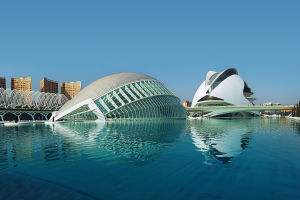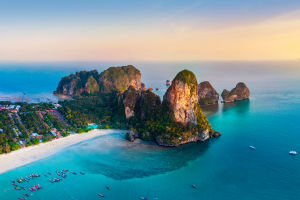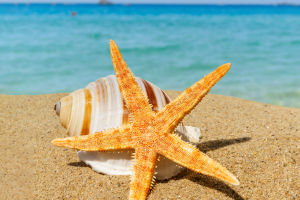
Valencia may not be as famous as Madrid or Barcelona, but when we really walk into this city, we are often amazed by its sunshine, history and food.
It combines the charm of ancient and modern, as well as the Mediterranean style that we can't resist. Whether you like culture, architecture, beaches or food, Valencia can satisfy us.
How do we get to Valencia?
Valencia is located in the southeast of Spain, bordering the Mediterranean Sea.
If we depart from other European cities, we can fly directly to Valencia Airport. From the airport to the city center, take Metro Line 3 or Line 5, which takes about 25 minutes.
If we depart from Madrid, we can take the AVE high-speed train and arrive at Valencia North Station in about 1 hour and 40 minutes. The station is in the city center, which is very convenient.
In the city, the bus and subway system are very complete. We can buy the Valencia Tourist Card, which is about $17 for 24 hours, about $23 for 48 hours, and about $29 for 72 hours, including unlimited rides and discounts on multiple attractions.
Historical Old Town: Strolling in the Monuments
Our first stop is the old town, which retains its medieval style and has a variety of architectural styles.
The Valencia Cathedral combines Roman, Gothic and Baroque styles. The bell tower "Migrete Tower" is 68 meters high and is the symbol of the city. The ticket price is about $9, including the cathedral, museum and bell tower. The opening hours are usually from 10 am to 6:30 pm every day, and from 2 pm on Sundays. It is recommended that we go early to avoid the crowds.
Nearby is the Silk Exchange (La Lonja de la Seda), a UNESCO World Heritage Site that showcases the splendor of Spanish Gothic architecture. Tickets cost about $2.50, and are free on Sundays. The opening hours are from 10 a.m. to 7 p.m. every day (until 2 p.m. on Sundays).
If you want to buy some special snacks or fruits, we can go to the Central Market (Mercado Central), one of the oldest indoor markets in Europe, which is open from 7:30 a.m. to 3 p.m. and is very lively.
City of Science and Art: A futuristic landmark
If you like modern architecture or travel with children, the City of Science and Art must not be missed.
This is a group of ultra-modern buildings located in the city's dry river park, including an IMAX theater, an interactive science museum, and the largest aquarium in Europe, the "Oceania".
Tickets for the Oceania are about $35, and the opening hours are generally from 10 a.m. to 8 p.m. (may be extended in summer). It is recommended that we reserve at least four hours for the visit. Tickets for the Science Museum and IMAX Theater are both around $9.5. You can choose a pass for about $45, which includes several pavilions.
You can take a bus from the city center, and bus lines 35 or 95 are very convenient.
Beach time: Malvarrosa Beach
Malvarrosa Beach is not far from the city center, about 20 minutes by car. The sea water here is clean and the beach is wide, which is very suitable for walking or sunbathing.
We can take Metro Line 4 or bus line 31 to get there. There are many restaurants nearby, among which "Casa Carmela" is famous for its traditional charcoal-fired seafood rice, and the price per person is about 18 to 25 US dollars.
The best time to visit is from April to June or September every year, when the weather is comfortable and there are not too many tourists.
Speaking of Valencia, you can't help but mention seafood rice
Valencia is the birthplace of seafood rice. The authentic "Paella Valenciana" uses chicken and rabbit meat instead of the seafood version we are familiar with.
We recommend going there at noon to try it, because locals usually only eat seafood rice at noon. Another recommended restaurant is "El Palmar" in the rice field area, where you can taste the most original flavor of Valencia paella.
A short trip to the suburbs: Albufeira Natural Park
If we have an extra day, we might as well go to Albufeira Natural Park, where there are large rice fields and lakes, and you can take a boat to watch the sunset.
Take bus No. 25 from the city, which takes about 40 minutes. The boat ticket is about 5 US dollars and can be purchased directly locally. It is recommended that we have lunch in the town of El Palmar at noon and then take a boat in the evening, which is very pleasant.
When is the best time to go to Valencia?
Mid-March is the most lively festival in Valencia, "Las Fallas", with giant paper sculptures, fireworks and parades everywhere on the streets, which is a special cultural experience.
If we like a quiet and warm climate, April to June or September are very ideal travel times. Avoiding the high temperatures and crowds in July and August will make our trip more comfortable.
Practical Tips
- Stores usually close from 2pm to 5pm, so we can arrange our trip reasonably
- Most attractions and restaurants accept credit cards, but bring some cash in case of emergency
- The city is very suitable for cycling, and renting a bicycle costs about 12 US dollars a day
- Many museums are open for free on Sundays, so remember to check in advance
- Don’t forget to bring sunscreen, the sun is strong even in spring
let’s make an appointment in Valencia!
Valencia is a city that offers much more than just a rich historical and architectural experience. It’s a place where the sun shines, the beaches invite relaxation, and the authentic food delights every taste bud. The pace of life is slower here, and the locals are incredibly warm, making it the perfect spot for us to unwind and truly enjoy life. From wandering through charming cobblestone streets to dining by the sea, there’s something magical about this city that we can all appreciate.
Lykkers, if you’ve already explored Valencia, what were your favorite moments? If not, what are you most excited to experience in this vibrant city? Feel free to share your thoughts and let’s keep the conversation going as we plan our next adventure together!
THINGS TO KNOW BEFORE YOU GO TO VALENCIA
Video by Creative Travel Guide


